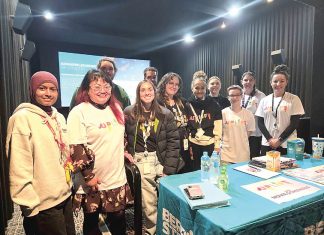Full statement of Dr Rosemary Lester:
The tabling in the Parliament of the second Hazelwood Mine Fire Inquiry report provides me with the opportunity to publicly reflect further on the events of that traumatic period, the process behind the subsequent inquiries, and my actions as Victoria’s Chief Health Officer at the time.
However, can I first express my sincere sympathies to those who lost a friend or family member during that unprecedented fire?
Throughout my career, culminating as Chief Health Officer in Victoria from March 2012 to my retirement in February 2015, I was involved in managing many major public health issues including: H1N1 flu pandemic, HIV infections, measles outbreaks, Ebola, Legionnaires’ disease, salmonella, the Bairnsdale ulcer, mosquito-borne diseases, heat waves, immunisation programs and, of course, the Hazelwood fire response and management.
I was humbled when, in 2014, after 33 years of working in public health and service, I was awarded the Victorian Public Service Medal for outstanding public health leadership.
It is therefore ironic and unfortunate that after a long and dedicated profession in public health with many highlights, the events surrounding the Hazelwood fire may well define my career.
The criticism of me from the first Inquiry was that, as Chief Health Officer, I waited too long to issue a temporary relocation warning to affected people as the fire continued to burn. The Inquiry Board has now found that it is likely that the mine fire contributed to some of the increase in deaths in the Latrobe Valley in 2014.
However, although deaths in the Latrobe Valley increased, the reality is that deaths in Morwell in February and March 2014 were in fact below the average for the past five years. This would seem to indicate that residents in Morwell heard the messages about how to protect their health.
This would seem to be inconsistent with the criticism of me in the first Inquiry.
The findings then determine that I had a conflict of interest and attempted to influence the analysis and the independence of the report I commissioned.
I reject these findings completely. When the issue of possible excess deaths from the fire came to my attention, I, in my capacity as Chief Health Officer, commissioned independent analysis of the death data collated from the Registry of Births, Deaths and Marriages (RBDM) during and after the fire.
This research was conducted by the internationally renowned School of Population and Global Health at the University of Melbourne. Its first report, delivered while I was still at the Department, concluded that “we do not find this increase to be conclusive evidence of any particular effect.”
Opinions have been expressed that my investigation of the issue was conflicted and lacked rigor. I outright reject both claims as unfounded and deeply insulting.
The Hazelwood mine fire was an unprecedented event requiring a crisis response involving the participation from the Premier and key Ministers down, with all emergency and public health agencies active. I maintain my role was absolutely collegiate – working with expert peers with many years of experience managing crisis scenarios.
My decision about temporary relocation advice required me to consider many variables. Levels of fine particles in the air was but one of them.
A key determinant in my thinking at the time, and after taking the considered advice from members of our expert team, was that relocating hundreds of people, possibly for weeks, was a major decision involving enormous cost and disruption in leaving their homes.
It is matter of public record that I issued a temporary relocation advice on 28 February, 2014 after it became clear that particle readings were trending upwards, and the Fire Services Commissioner advised that it would take a further two weeks to bring the fire under control.
At all times during the fire, I tried to give the best possible advice to the people of Morwell and the Latrobe Valley as to how to protect their health. This was based on the best information available at the time.
Subsequently, when the issue of possible excess deaths was raised, I investigated this issue in a professional and unbiased manner. This is evidenced by my engagement of independent and expert analysis and the provision of this work to the community.
The Inquiry Board is free to come to its own conclusions in this matter. I maintain that I have at all times acted professionally with the best interests of the community in mind and I do not accept the Board’s criticisms of me.
I would like to place on record my gratitude to my family for their support. As well, the Victorian public health community is a broad church that has given me great strength and I am grateful for its support as I set about clearing my name.










